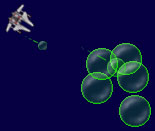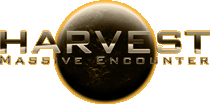Oxeye’s Green-lighting Procedure
January 6th, 2010, Game Development, Indie Life I found a small document lying around in my folder for Oxeye-related stuff. It described the different phases that our projects go through before a release, and I thought it would be fun to share it with others.
I found a small document lying around in my folder for Oxeye-related stuff. It described the different phases that our projects go through before a release, and I thought it would be fun to share it with others.
Oxeye consists of five people who are in different stages of life and with different abilities to spend time on game development. Our process for selecting which game to work on thus needs to be rather “loose.” The most important thing is that we feel that we are having fun (and releasing games is fun!). Our process can obviously not be applied to all kinds of companies, but on the other hand our company is not the kind of company you read about in business books.
The Concept Phase
In this phase there’s only a game idea and a very short draft for the game. A game concept should be descibed so that it fits on a single A4 paper. I think we have 7 of these concepts on our office wall at the moment. To be honest, I think the font size has gotten smaller for each new one, but we still try to keep these concepts as short as possible.
Light Prototyping
In this phase one or two of us creates a simple prototype to test the game idea. Nothing more than our valuable time is invested on this prototype. Games such as Jet Engine Nights and House Globe are considered light prototypes, even if House Globe never was intended to be anything else than a TIGSource competition entry. Anybody can start a light prototype when-ever they feel like it (unless there’s a time-crucial deadline coming up, of course).
Heavy Prototyping
In this phase at least 3 of our members have decided that we want to put a little more effort on the prototype. The difference to “light prototype” is that we can use our savings on buying stuff for the prototype (such as music and other material we can’t create ourselves).
Green-lighted
Only one game can be “green-lighted” at a time. The green-lighted game will be our main project and all effort will be put into completing the game. A prototype can only be green-lighted once everybody agrees that it’s a good idea, and that we have some kind of plan on the scope of the game and how long it’s going to take to finish it. Our current project is “Project B.”
Green-lighted games can still be abandoned, though. Every two months we have a reschedule meeting (using Skype) to keep track on progress and to update the plan. If we realize that we have mistaken ourselves on the game idea or our ability to create the game, then it will be dropped. Obviously not an easy decision to make!
/jeb





January 7th, 2010 at 1:08 am
Can you give us an approximate number on the percentages of games in each phase that reach the next phase?
January 7th, 2010 at 9:01 am
Uhm no… I don’t have any such statistics. However, the only game that has been a “heavy prototype” without being green-lighted is Agatha Ragata. Our green-lighted games have been The Strategist (finished), Dawn of Daria (discontinued), Harvest (finished) and currently Project B. I’d say that’s about every 4th prototype or so…
/jeb
January 7th, 2010 at 9:32 am
Interesting information